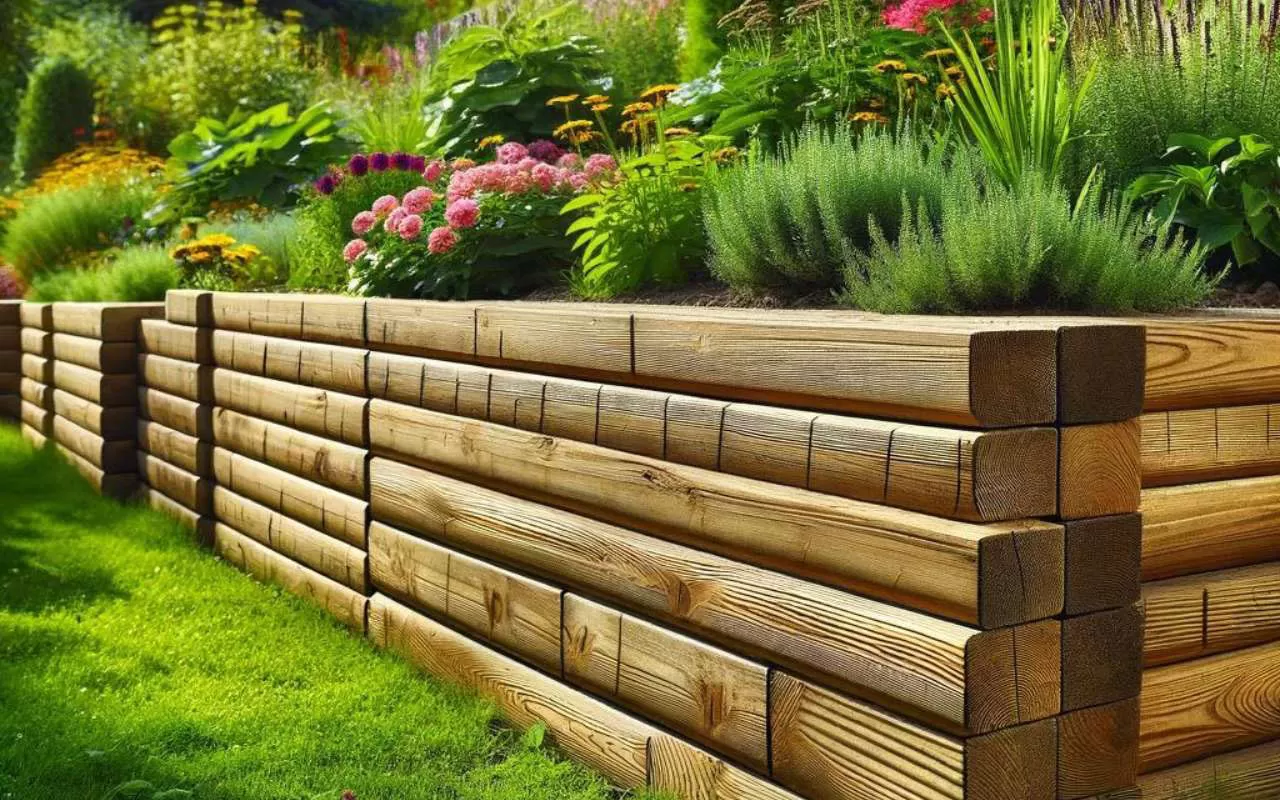
- Fri, May 2024
- |
- Moran’s Landscaping & Excavation LLC
Unlock the secrets to constructing a durable retaining wall with railroad ties. This introductory guide will cover the foundational steps necessary to enhance your landscape while ensuring structural integrity.
This guide simplifies building for both new and experienced enthusiasts, providing practical insights and easy tips. Embrace the journey of transforming your outdoor space with confidence and creativity.
Guide to Constructing Your Retaining Wall
Embark on the journey of constructing a retaining wall with railroad ties. This project enhances your property’s aesthetic and creates a lasting structure to manage soil and water flow. This comprehensive guide equips you with essential details to confidently undertake this endeavor.
Why Use Railroad Ties?

- Durability: Railroad ties are robust and capable of withstanding harsh weather conditions, which makes them ideal for outdoor structures.
- Aesthetic Appeal: Their rustic appearance can uniquely enhance any landscape.
- Cost-Effectiveness: Often more affordable than alternative materials, railroad ties provide a budget-friendly solution for many homeowners.
Steps to Build a Retaining Wall
- Plan Your Wall: Measure the area and determine the desired height and length.
- Prepare the Base: Dig a trench and fill it with gravel to ensure a solid foundation.
- Lay the Ties: Stack the railroad ties securely, aligning each layer precisely.
- Backfill: Stabilize the structure by backfilling with soil once the ties are placed.
Maintenance Tips
- Regular Inspection: Regularly check the wall for signs of wear or damage, particularly following extreme weather conditions, and promptly address any issues to extend its durability.
- Replace Timely: Replace deteriorated ties to maintain the structural integrity of the wall.
- Weed Control: Maintain the area clear of weeds that might undermine the structure’s strength.
To further ensure the longevity of your retaining wall, consider implementing drainage solutions behind the wall to prevent water buildup, which can lead to pressure and structural damage over time.
Additionally, consult with a landscaping professional to tailor the design and materials to your specific environmental conditions and aesthetic preferences. This proactive approach will maximize your retaining wall’s functionality and visual appeal, making it a central outdoor space feature.
FAQs
Q: How long do railroad tie retaining walls last?
A: Properly installed and maintained, these walls can last up to 20 years. Regular care and timely repairs play a crucial role in extending the lifespan of your retaining wall, ensuring it continues to serve its purpose without compromising safety or aesthetics.
Q: Are railroad ties safe for gardens?
A: While treated ties can be safe, opting for newer, eco-friendly wood is essential to prevent soil contamination. Understanding the specific chemicals used in the treatment process is also advisable.
If unsure, consider alternatives such as untreated natural wood or other eco-friendly building materials that ensure safety and environmental sustainability. This careful selection helps maintain the health of your garden’s ecosystem while providing the structural benefits needed for your projects.
Wrap Up Your Landscaping Project
Are you ready to take on your next landscaping challenge? With our expert tips, you can easily build a durable and beautiful retaining wall using railroad ties. If you need personalized guidance or additional resources, don’t hesitate to get in touch. We’re here to support your journey every step of the way, ensuring your project meets and exceeds expectations.
Begin your landscape transformation today!
